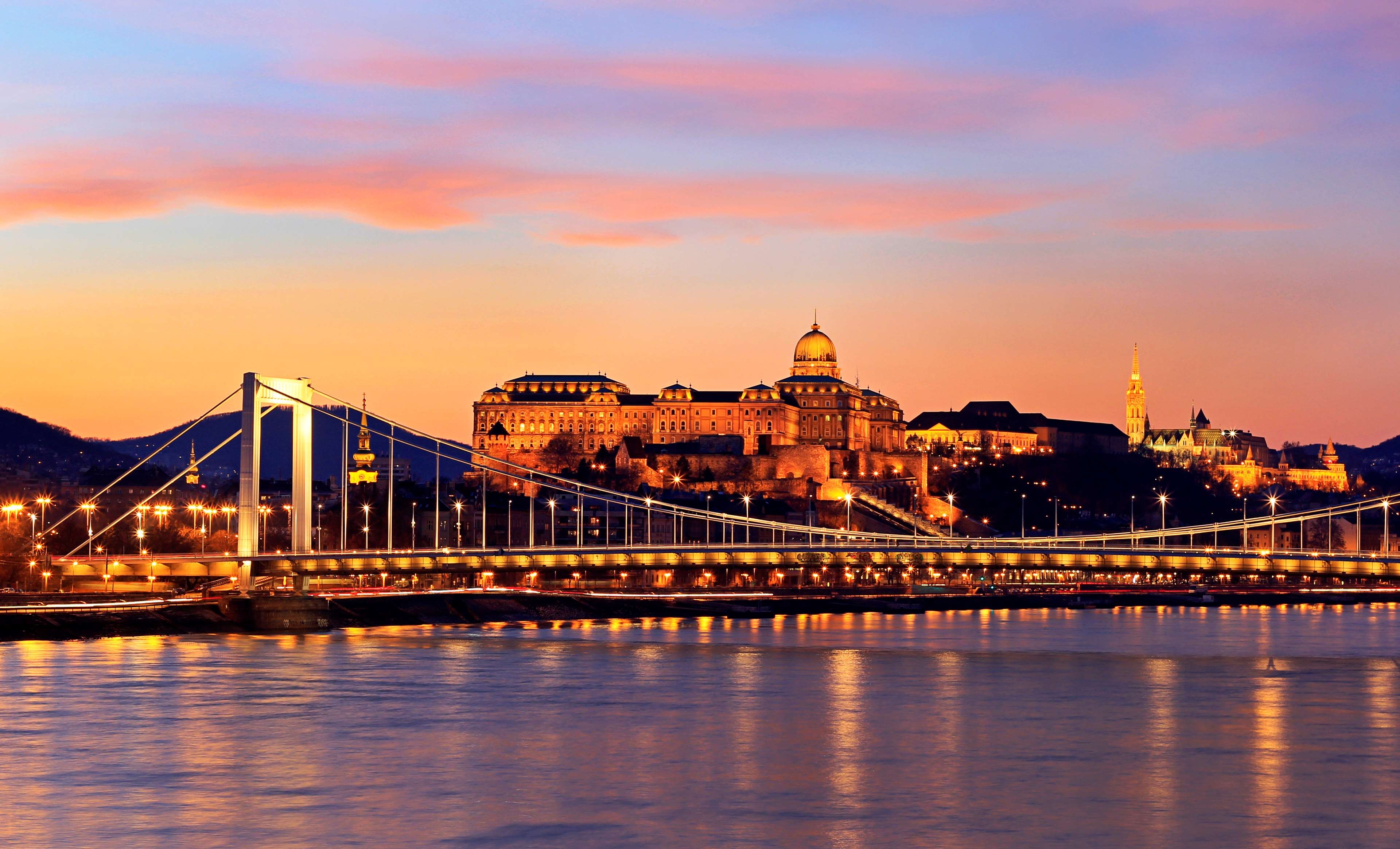
Bridges of Budapest
Revealing a fascinating face of the city and its diverse history
Bridges of Budapest
12 road and two railway bridges connect the different districts of Budapest over the river Danube. All of them are different and all revealing a fascinating face of the city and its diverse history. The most famous central bridges are:
Széchenyi Chain Bridge (Széchenyi Lánchíd) was designed and built by a team of English and Scottish engineers, supported by Count Széchenyi, and eventually opened in 1849, marking a major step forward in the history of the city’s subsequent economic boom. The bridge was not just fancy but provided permanent passage across the river, which otherwise had taken place on a pontoon bridge and winter ice. The bridge is slated for a complete renovation soon.
Kempinski Corvinus is nearby, and you’ll find some of the best restaurants and bars around St Stephen’s Basilica, the central cathedral and Zrínyi utca, which leads to the bridge. On the Buda side, this is where you pick up the funicular to take you up to the castle.
Margaret Bridge (Margit híd) connects the city with Margaret Island, plopped in the middle of the Danube. The bridge was built in the 1870s, and today’s structure contains salvaged bits of steel from the ruins that were left of it after the war. Recently renovated, it provides a spanning vista of Pest and Buda.
Nearby, Olimpia Park is a multi-purpose communal space, complete with a boat-shaped climbing fence and a dog path. Margaret Island offers plenty to do, from strolling and jogging to exploring its sites. Further up Rózsadomb, an upscale residential hill, one of the remains of the Ottoman era is the Gül Baba Rose Garden and its tomb of the dervish, who took Buda in 1541, and is known as the Father of Roses.
Elisabeth Bridge (Erzsébet híd) has the unfortunate reputation of being the only bridge that could not be rebuilt in its original form after the war, but the resulting stunning white structure makes up for the loss, and it does give you one of the best Insta and selfie spots on both sides.
There’s an embankment promenade between Elisabeth Bridge and Chain Bridge, ideal for a stroll along the river. The Hungarian National Museum is within walking distance to explore the history, art and archaeology of Hungary, including areas not within Hungary’s modern borders, such as Transylvania. On the Buda side, the bridge’s namesake, Queen Elisabeth, wife of Habsburg emperor Franz Joseph, has a bronze statue in a small garden. Rudas Baths is across the road: built in 1550, it retains some of the Ottoman features, such as its Turkish dome and octagonal pool. From the Buda side of the hill, there’s a longer promenade along the Danube, leading all the way to Margaret Bridge, or you can hike up Gellért Hill from here.
Liberty Bridge (Szabadság híd) dates back to the late 1800s, and it’s the shortest and possibly most romantic bridge, outfitted in green and lace-like metalwork. It features the Turul bird, Hungary’s mythical bird, perched on the pillars.
In July, Liberty Bridge Festival (Szabihíd, or “vacay-bridge” to Hungarians) takes over the bridge from traffic at the weekends. People hang out and relax all over the bridge, with only bicycle traffic allowed. The Great Market Hall is one of the most popular tourist destinations in the city, while it remains the market to shop at for locals. If you feel like a walk, the embankment promenade going south was recently constructed and takes you along the river to the National Theatre, the modern art museum Ludwig and MÜPA, the Palace of Arts. On the way, you can stop by Bálna, the contemporary glass structure pulled over the warehouses, and enjoy food and drinks in the restaurants and bars there.
On the Buda side, you can stroll up to Gellért Hill from here, or enjoy the Orientalist galore of Gellért Baths indoors and outdoors. A UNESCO World Heritage Site, Gellért Hill also has the Citadella, a fortress, built by the Habsburgs after 1849. The hilltop spot also offers an incredible view of the city, especially at dusk.
Be sure to head back to our Local Information page to discover more of what to see and do in Budapest. Of course, our Clefs d'Or Member concierges and our entire staff at Kempinski Hotel Corvinus will be more than happy to assist in any way they can during your stay too.
Be the first to hear about our news, events and offers, along with exclusive promotions. Subscribe to our mailing list now! kempinski.com/budapest/news
What are your most remarkable moments in Budapest? Show us on Facebook or Instagram with #KempinskiBudapest #MyBudapestMyKempinski!


